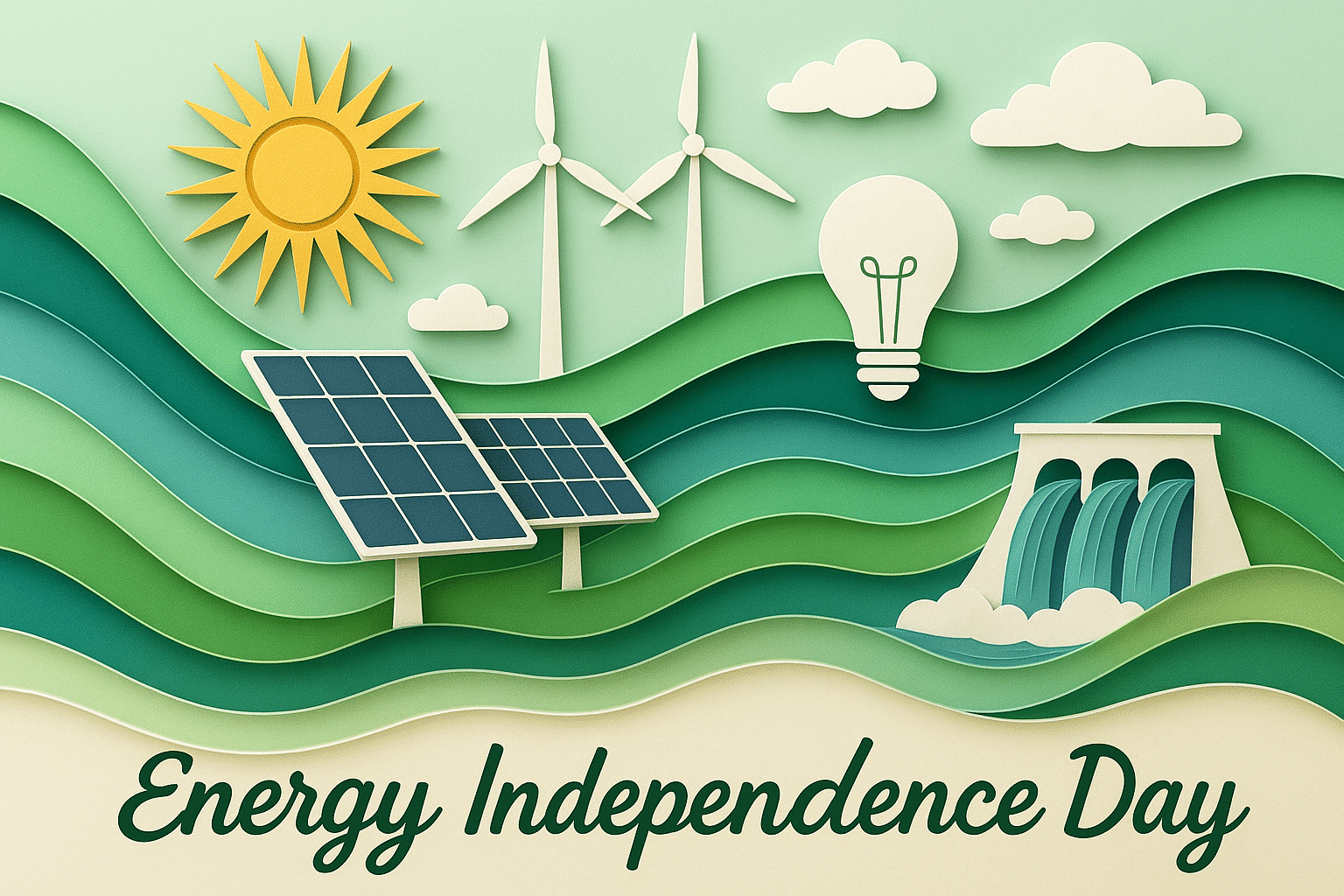What is Global Energy Independence Day?
Global Energy Independence Day is observed every year on July 10. This day encourages countries around the world to reduce their dependence on foreign fossil fuels and invest in clean, locally generated energy. It highlights the importance of energy security, environmental responsibility and economic stability. By focusing on solar, wind, hydro and other renewable sources, this day promotes a shift toward sustainable energy systems that are better for people and the planet.
Nations of all sizes face challenges around energy dependence, rising fuel prices and climate impact. Global Energy Independence Day offers a moment to reflect on long-term solutions: cleaner power, more efficient systems, and greater control over how energy is produced and used. Whether through personal choices or national policy, energy independence is becoming a shared global goal.
History and Origin
The roots of Global Energy Independence Day trace back to July 10, 2008, when discussions around energy self-sufficiency gained major attention in the United States. Originally tied to national policy changes, the date soon became symbolic of the wider push for local energy solutions. As interest in clean power grew, environmental groups and energy innovators began using July 10 to promote renewable energy, efficiency and independence from polluting fuels.
Over time, the observance evolved beyond national borders. Energy independence became a shared goal for countries affected by energy imports, rising demand, and environmental degradation. As solar panels, wind farms and electric transport expanded, the day found new meaning worldwide. Now, Global Energy Independence Day is a chance for individuals, businesses and governments everywhere to consider how they can contribute to cleaner, more secure energy systems.
Who participates in Global Energy Independence Day?
- Environmental groups: promote clean energy solutions through campaigns and outreach
- Energy innovators: showcase renewable technologies like solar panels and wind turbines
- Teachers and students: organize projects about sustainable energy and climate impact
- Policy makers: highlight energy strategies that support self-reliance and green growth
- Homeowners and renters: explore energy-saving tools and reduce fossil fuel use
Slogans and Themes
This day is often marked by bold slogans such as “Power locally, think globally,” “Own your energy,” and “Clean energy, strong future.” The themes focus on local control, innovation and the environment. It’s a day for thinking about long-term solutions, and how clean energy can bring greater stability, health and independence to communities worldwide. From cities to rural villages, the goal is the same: reliable energy that doesn’t depend on faraway resources or polluting systems.
Colors, Symbols and Patterns
Colors
- Green: represents sustainability and the shift to renewable energy
- Blue: symbolizes stability, progress and global cooperation
- Orange: reflects innovation, energy and positive change
Symbols
- Solar panel: stands for local, clean energy production
- Wind turbine: represents innovation and natural power
- Globe with plug: combines the global and local aspects of energy independence
Patterns
- Sunburst lines: evoke solar energy and bright potential
- Grid patterns: reflect modern energy infrastructure
- Circular motion graphics: symbolize energy flow and connection
Most used hashtags
- #energyindependence
- #cleanenergy
- #renewablepower
- #sustainablefuture
- #globalenergy
How do you celebrate Global Energy Independence Day?
- Switch to clean energy: Choose solar, wind or green energy plans where available
- Reduce energy use: Turn off unused devices and improve home insulation
- Learn and share: Explore new tech and talk about energy issues with others
- Support local power: Back companies and projects that produce energy locally
- Upgrade transport: Walk, bike or use electric vehicles to cut fuel dependence
Why is Global Energy Independence Day important?
Global Energy Independence Day matters because energy is at the heart of modern life. When energy is locally sourced and sustainably produced, communities are more secure, economies are more stable, and the planet is better protected. Reducing dependence on imported fuels also means greater resilience during crises and more control over prices and supply. This day is a reminder that clean, independent energy systems aren’t just possible ; they’re necessary. Everyone has a role to play, from daily habits to national decisions.
Features
July 10: Energy Independence Day
Why do you keep falling for the same type?
Read the article Lovemaps: the hidden blueprint of our love.

